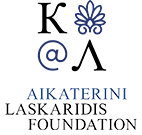Art and antiquities (4900 Subjects)
Front elevation of the Gate of Athena Archegetis (mod. Pazaroporta).
Lateral elevation of the Gate of Athena Archegetis (mod. Pazaroporta).
The capital and the entablature of the Gate of Athena Archegetis (mod. Pazaroporta).
Gate of Athena Archegetis (mod. Pazaroporta): 1. The capital of the Antae, with a section of the entablature. 2. A section of the capital of the Antae. 3. A section of the Cornice over the Pediment.
Mosaic, most probably from a building somewhere in between the Temple of Hephaestus (Thiseion) and Dipylo.
Ionian capital from the Temple of Artemis Agrotera in Agrae (Panagia stin Petra) in Athens.
South view of the Temple of Artemis Agrotera in Agrae (Panagia stin Petra) in Athens. The figures represent the Vaiwode, or Turkish Governor of Athens, with some of its attendants on a hunting party.
Temple of Artemis Agrotera in Agrae (Panagia stin Petra), Athens: A plan of this Temple.
Temple of Artemis Agrotera in Agrae (Panagia stin Petra), Athens: The elevation of the Portico.
Temple of Artemis Agrotera in Agrae (Panagia stin Petra), Athens: The south side of the Temple.
Temple of Artemis Agrotera in Agrae (Panagia stin Petra), Athens: The section of the temple, lengthways.
Temple of Artemis Agrotera in Agrae (Panagia stin Petra), Athens: Fig. 1. The capital and base of the columns, together with the entablature. Fig. 2. A section of one quarter of the column, to shew the number and proportion of the flutings. Fig. 3. The manner of forming the Flutings.
Temple of Artemis Agrotera in Agrae (Panagia stin Petra), Athens: The plan, profile, and section of an angular capital belonging to this ionic temple.
Temple of Artemis Agrotera in Agrae (Panagia stin Petra), Athens: The capital and base of one of the antae; with the different architraves which are employed in this building. Fig. 1. A., The architrave within the portico. Fig. 2. The architrave to the Pronaos. Fig. 3. The Form of the ancient Ornament which is painted on the upper Fascia of the Architrave of the Pronaos. Fig. 4. The architrave to the Posticus.
Ormament of architectural feature.
Relief of Apollo Agyieus, bearing the inscription: ΑΓΑΘΗΙ ΤΥΧΗΙ. ΑΠΟΛΛΩΝΟΣ ΑΓΥΙΕΩΣ ΠΡΟΣΤΑΤΕΡΙ ΠΑΤΡΩΟΝ ΠΥΘΙΟΥ ΚΛΑΡΙΟΥ ΠΑΝΙΟΝΙΟΥ.
The Horologion of Andronikos Kyrristos (Tower of the Winds) in Athens, with the Acropolis in the background.
Seikh Mustafa, chief of the order of Whirling Dervishes, who used the monument as their tekije (dervish lodge), is standing at the entrance of the monument, leaning on a staff, with his back turned.
In the foreground, a woman from an affluent family is promenading with her daughters and maidservant.
Plan of the Tower of the Winds (Horologion of Andronikos Kyrristos) in Athens.
The elevation of the Tower of the Winds (Horologion of Andronikos Kyrristos) in Athens.
Section of the Horologion of Andronikos Kyrristos (Tower of the Winds) in Athens.
Ι. The external mouldings of the Tower of the Winds. ΙΙ. A section of the uppermost of the three steps which form the basis or stereobata on which the building stands.
Fig. 1. A quarter of the roof of the Tower of the Winds. Fig. 2. A section of half the aforesaid roof. Fig. 3. The fragment of a capital marked B in the preceeding figure, and which in Plate III of this chapter is, with some restorations made to support the conical Marble and the Triton.
Tower of the Winds (Horologion of Andronikos Kyrristos) Athens: Fig 1. The capital and entablature of the portico before the door. Fig. 2. A fragment of the Dentells belonging to the cornice of the entablature. Fig. 3. The profile of the cornice belonging to the circular projection under the figure of ΝΟΤΟΣ.
Tower of the Winds (Horologion of Andronikos Kyrristos) in Athens: The capital of one of the antae.
The internal mouldings of the Tower of the Winds: Fig. 1. The lower cornice. Fig. 2. The second cornice, enriched with dentels and modilions. Fig. 3. The soffit of the second cornice. Fig. 4. The circular fascia with the inferior part of one of the columns which it supports, likewise the capital and the entablature of those columns. Fig. 5. Explains the manner in which the cabled part of the flutings on those columns are terminated.
Three of the eight dials on the Tower of the Winds. Under the word ΝΟΤΟΣ is that on the south side; under ΕΥΡΟΣ is that on the south-east side; and under ΑΠΗΛΙΩΤΗΣ, that on the east side of the Tower.
Tower of the Winds (Horologion of Andronikos Kyrristos) in Athens: Two more of the eight dials. Under the word ΚΑΙΚΙΑΣ, is that on the north-east side; and under the word ΒΟΡΕΑΣ, that on the north side of the tower.
Tower of the Winds (Horologion of Andronikos Kyrristos) in Athens: Boreas, the north wind; is cold, fierce and stormy.
Tower of the Winds (Horologion of Andronikos Kyrristos) in Athes: Kaikias or Caecias, the north-east wind, is cloudy, wet and cold; snow, and at some seasons hail and tempest accompany this.
Tower of the Winds (Horologion of Andronikos Kyrristos) in Athens: Apeliotes, the east wind; brings a gradual gentle rain, and is a great friend to Vegetation.































